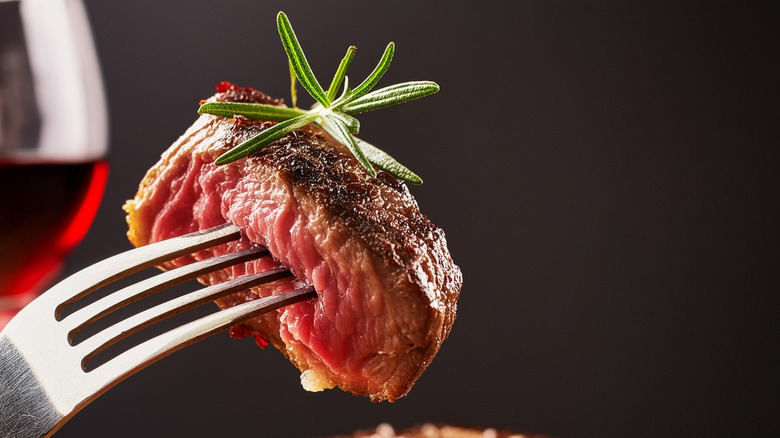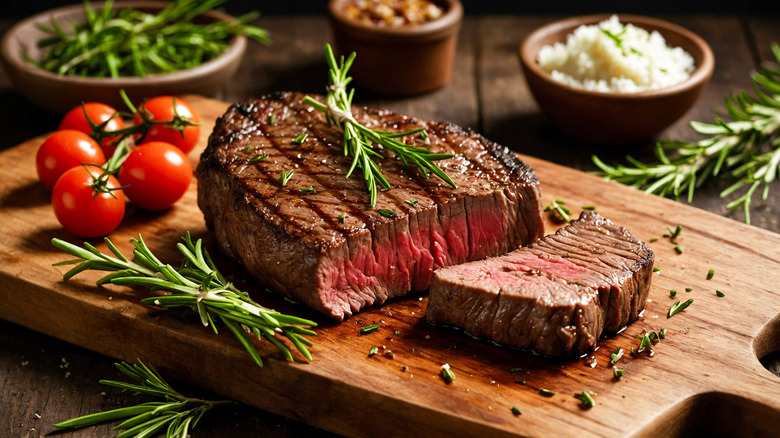Stop Overcooking Your Steaks With One Game-Changing Tip
One of the most important skills to learn as a home cook is how to cook a steak to your liking. After all, steak at a restaurant can get pretty pricey, and it's not so complicated to master in your own kitchen as long as you choose the best cut of meat and don't start with a cold steak. If you find that even with some practice you're still overcooking steaks, there is one last game-changing tip: Buy thicker steaks. In fact, it's one of the biggest parts of choosing the perfect steak at the store.
You may not have noticed it, but the steaks you can buy at the supermarket are not the same as the steaks at a restaurant when it comes to thickness. Most grocery store steaks are cut to around an inch thick or less, most likely because shoppers tend to choose meat by the price on the package sticker; thinner, cheaper steaks sell better than thicker, more expensive steaks.
The problem, however, is that steak needs to be seared over high heat for at least a couple of minutes on both sides to get a crust. If the steak is too thin, there's simply too much heat, and the steak is doomed to be overcooked.
How to shop for thicker steaks
Steaks that are thicker cut, like New York strips and ribeyes, should be at least 1 inch thick, but 1½ inches is even better. The thicker the meat, the longer you can leave the steak on the heat to sear without worrying about it turning to rubber. If you follow the rule of threes for grilling, you'll need at least three minutes to sear on each side. If you're not sure what an inch looks like, it's roughly the distance between the tip of your index finger and the first joint.
Similarly, when you're shopping for your steak, keep an eye out for fat content and color. A higher quality steak will be a richer, deeper red (think grass-fed versus grain-fed) rather than a light pink, and you want something with enough marbling to give the meat plenty of flavor as it cooks. If you're having trouble gauging the marbling, look for the USDA label. Prime has the most marbling, Choice the next, and then USDA Select will have the least.
You'll probably find that a lot of grocery store steaks aren't very thick once you start eyeballing the pre-packaged steaks, so it's wise to shop around for the best cuts. Stores with dedicated meat counters, like Whole Foods and Wegmans, have thicker steaks at the counter (versus the open meat cases), or you can ask a butcher in the meat department of your local shop to cut some thicker steaks. You should also try scoping out a specialty butcher shop or a local market that focuses on meats with a dedicated butcher. Steaks from these stores will likely be thicker than the average grocery store offerings — plus, if you love to cook, it's always a great move to get to know your local meat monger who can tell you what's fresh and on sale.


